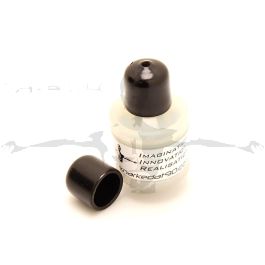I followed the advice today. As I had installed a new piggy tail wire, I dissected the old one to see what was going on.When I start replacing pins (this week, whenever the pins show up), I will know how far the water has traveled up the wire.
I will cut the current pins off at the connector, then strip the right length of wire. If it's corroded, I will cut more off and repeat until I have good, clean, bare copper to attach the pin to.
If the wire gets too short, I really don't think it's a problem to splice on an extension with waterproof heatshrink over it. Test it by checking mV on a cell on a known good connector and then check it on a repaired connector to ensure it gives the same reading.
I'm not recommending that you or anyone else do that. You and everyone else should definitely buy a new part when the existing one gets corroded and is no longer reliable. That is surely the safest way to deal with it and what I would recommend to anyone to do.
Here is the picture of the wire ends that I cut off ~1/2" from the Molex connector. There is no "copper" color and lots of black residue.
After we exchanged text messages, I continued to dissect the wire and removed ~1" isolation at the time. In my case, the wire was quite done - moisture traveled almost to the "fused" or "potted" connection that linked the cells with the 4-PIN female outlet. At this point, I call it toast. Screwing with it is not worth it for me. I really wish this were a $20 part so that I could replace it yearly. A better design could help, too ;-(





